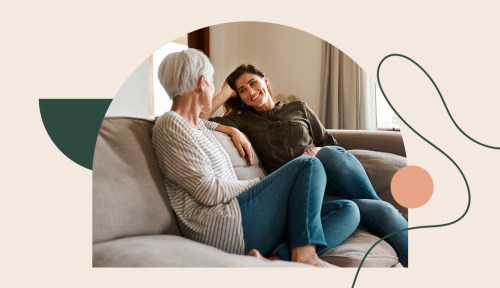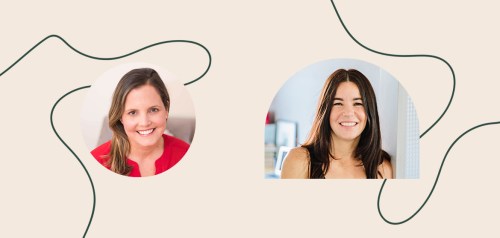Our editors independently select these products. Making a purchase through our links may earn Well+Good a commission
How the Pandemic Changed What ‘Adulthood’ Looks Like
The traditional adulthood stages of development involve finishing school, getting married, etc. But today, it's much less straightforward.

When most kids grow up and leave home, the goal is typically to make it on their own and never live with their parents again. If they move out of town, that may mean only seeing their family for a week or so at a time. But when the pandemic hit, moving back in with their parents became a way for many younger adults to find stability.
Experts in This Article
journalist and author of Text Me When You Get Home and But You’re Still So Young
licensed marriage and family therapist
“For the first time—and this was true before the pandemic, but it has only increased because of it—living at home with your parents is the most-common way of living for people ages 18 to 34,” says Kayleen Schaefer, journalist and author of Text Me When You Get Home ($16) and But You’re Still So Young ($23). “That didn’t use to be true; it used to be with a romantic partner, but not so anymore. And these people are all doing different things, and yet it does seem like we’re in this together because we have this new opportunity to structure our adulthoods how we really want to—not based on the traditional adulthood model that’s been around since the 1950s.”
Conventionally, adulthood stages of development involve finishing school, leaving the house, becoming financially independent, getting married, and having children. But over the decades, what adulthood looks like has become much less linear. In the latest episode of The Well+Good Podcast, our senior producer Taylor Camille chats with her mother, Schaefer, and licensed marriage and family therapist Melissa Divaris Thompson, LMFT, about how the pandemic has seriously shifted what it means to be an adult.

For those who have strong bonds with their parents, going home during this past wild year was something of an instinct. “You want some sense of certainty when there is so much uncertainty,” says Thompson. For others, it was out of necessity due to layoffs and other changes in income. “Most people’s parents aren’t going to say, ‘No, you can’t move back in the middle of a pandemic,'” Thompson says, adding that this gave many an opportunity to build bonds with their folks that wouldn’t have otherwise been possible. “You’ve worked through establishing new boundaries, and maybe you’ve gotten to get to know each other on a deeper level,” she says. “That, I think, is a silver lining of this pandemic.”
This extended time at home also gave adult children time to regroup if foundational parts of their lives fell apart. “Losing your plan makes you open to things that you never thought you would be open to, and that can be a really good thing,” says Schaefer. “We all knew before the pandemic that life doesn’t always go as planned, but there was a little bit more of sense of, ‘I’m in control. I’m the one pulling the strings.’ And then the pandemic happened, and it’s just so clear how forceful and unexpected life can be. The pandemic just showed us how much more open we can be.”
This freedom to take a more personalized approach to adulthood has also come along with some restraints, though. “We are also coming out of a recession,” Schaefer notes. “Our wages aren’t rising with the cost of living. Rent is high. The cost of homeownership is crazy high. The cost of health care, the cost of child care—it’s all only going up.”
Whether you’ve already flown the nest or are still home, Schaefer notes that although times are hard right now, know that you are allowed to move at your own pace. And if that means a few more months in your childhood bedroom, then that’s where you’re supposed to be. “Do things on your own timeline,” she urges. “It’s okay to go backward and forward and sideways and upside down and whatever you need to do to make your life your own. Eventually, you’re going to get to someplace that’s really just yours.”
Listen above, and subscribe to The Well+Good Podcast on Apple, Spotify, or wherever you get your podcasts.
Sign Up for Our Daily Newsletter
Get all the latest in wellness, trends, food, fitness, beauty, and more delivered right to your inbox.
Got it, you've been added to our email list.










